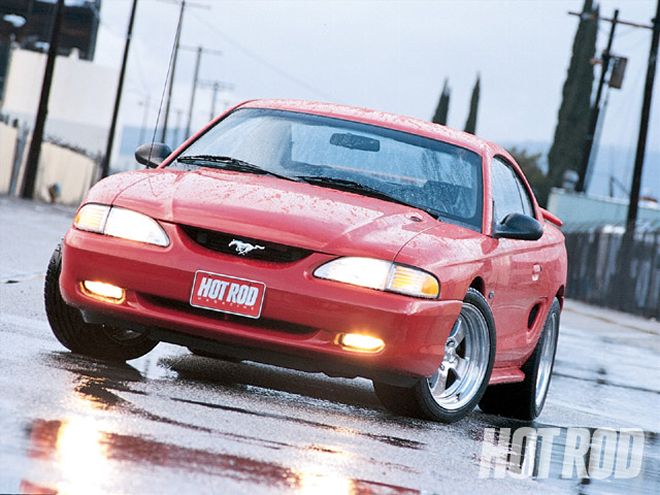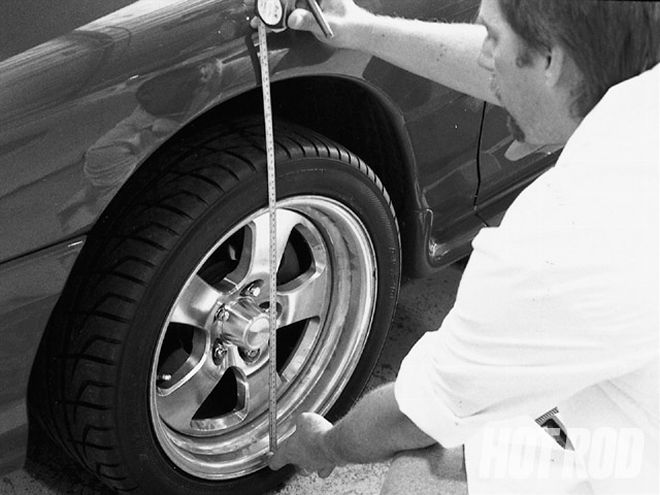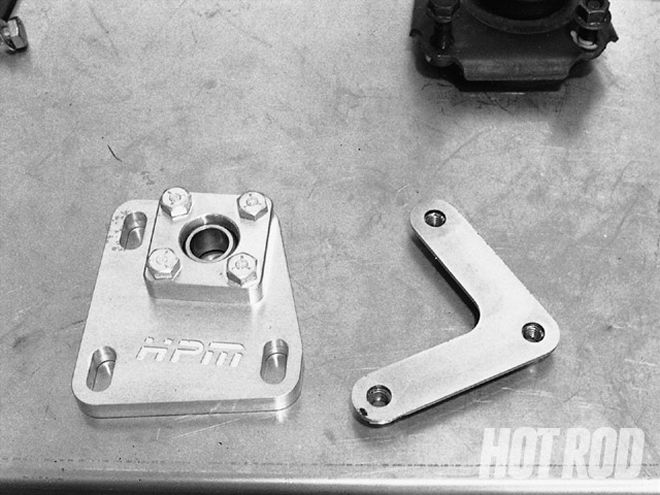

Eibach Springs has built its solid rep on superbly engineered street suspension systems, and we're visiting them this day because it's time for Project Mustang to put up or shut up-so we're putting up. Our host, Pat Soffe, works R&D and has seen and heard it all. He experiences Eibach stuff in a real-world situation every day on the Ortega Highway, an infamously snaky piece of Southern California mountain road dotted with makeshift shrines to those who never made it to the other side.
Are we here to make this car safer and more adroit in the corners or to let its natural beauty shine through via a cosmetic process? A little of both, perhaps. We wanted to haul the Mustang off its high perch, reduce the space between the top of the tire and the lip of the wheelwell, enhance its inherent good looks, and upgrade its handling in emergency maneuvers. Further, we wanted to maintain an enviable ride quality and have the car be totally usable on the street (no parking-curb nightmares, no speed-bump humping, no noises from beneath, and no massive amounts of tire-grinding negative camber). In short, the Mustang had to perform at least as well, if not better, as it did in the stock configuration.
 Prior to the change, Eibach's Soffe measured the distance between the top of the tire and the wheel arch. His ministrations shortened this distance by 1.4 inches.
Prior to the change, Eibach's Soffe measured the distance between the top of the tire and the wheel arch. His ministrations shortened this distance by 1.4 inches.
To prepare for the change, we enlisted an Eibach Pro Kit (PN 3510.140) which consists of progressive-rate coil springs (450/570-lb/inch front; 200/250-lb/inch rear) and a drastically shorter pinion snubber. Since Eibach works closely with Koni North America, we matched the springs with adjustable Koni "D" Sport struts (PN8741 1300) and shocks (PN 8041 1186). The inclusion of HP Motorsport camber plates would allow caster and camber to be independently optimized to maintain favorable steering geometry.
While we could have caved to the current rage of mega-diameter wheels, we considered the scant sidewall of a 30 or 35 series as impractical-pouncing on a healthy pothole could quickly put an expensive alloy rim out of business. Rather, we settled on some of the latest Yokohama technology as found in its 17-inch, 40-series A520 asymmetrical street stickies. Though we knew the A520s would provide excellent cornering ability, we were interested in their capacity to run quietly and to shed water as well. The idea was to put as much rubber to the ground as possible without compromising ride quality or interfering with the Mustang's bodywork and suspension. Considering our extremely light, absolutely gorgeous, and, yes, hideously expensive forged Fikse Mag 9.0- and 10.0-inch-wide modulars, the Yokohama techies thought 255s and 285s would be the perfect complement.
These tires and rims represent the feasible limit; the front rubber is barely within the shadow of the fenders, and the rears will be trying hard to rub metal on a sharp jounce. Though the front tires do not contact anything but the tarmac, the rear ones are better off with the fender lips rolled under. On very hard input, the wheel arch stoops to kiss the tire tread, signaled by a momentary "bzzzt"... but that's all she wrote.
 Slotted (to facilitate geometry changes) HP Motorsport camber plates are secured to the body with threaded, boomerang-shaped companions that are attached from beneath.
Slotted (to facilitate geometry changes) HP Motorsport camber plates are secured to the body with threaded, boomerang-shaped companions that are attached from beneath.
Soffe and the Mustang spent nearly an hour and a half on the high-zoot Hunter alignment rack. First, Soffe "squared" the car by checking the thrust angle, which is the location of the front wheels in relationship to the rear ones; there was was a difference of just 0.01 degree. When he was through, the red bomb had -1.0 degree of camber, 5 degrees of caster, and -1/16-inch toe-in.
Ride quality is better (due in part to the reduction of unsprung weight via the lightweight Fikse wheels) than it was in the stock configuration, and the suspension imparts less of a shock as it passes over speed bumps. In all, the ride is softer, more fluid, and without a hint of sloppiness. The Koni inserts take partial credit for that, even though they are on the softest possible setting. Overall, the Yoko's aggressive tread pattern offers a quieter ride than the stock Goodyears but tend to tram somewhat on uneven pavement, but this is a normal occurrence for such a large tire on such a wide front rim. Thanks to Flip's Performance's mounting and balancing, these big balonies run true and shudder-free.
Yes, we are quite pleased with Soffe's expert ministrations and the results of the changes. At once, they've improved the Mustang's dynamics considerably and have imparted a tough, don't mess with me stance-"Man, those wheels are BIG!"